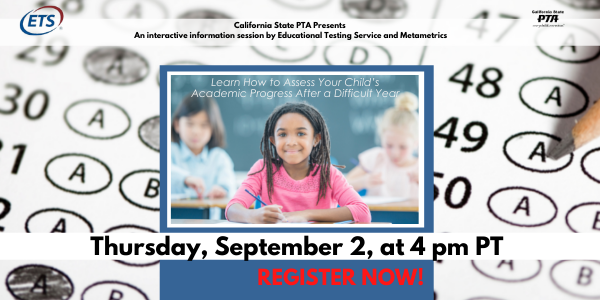by Mary Perry, California State PTA Board of Managers
All over California, the back-to-school ritual has begun. This year, of course, that ritual is so different. For many students and families, it’s the first time in more than a year that in-person school has even happened.
We hear a multitude of opinions about how to keep schools safe. Governor Newsom issued an executive order calling for universal vaccinations and/or Covid testing at every school. We also have a minority of people agitating against taking safety precautions at all – no vaccines, no masking, no social distancing.
Does it all have you feeling anxious and confused?
There are some great resources available to help you and others in your PTA conquer that anxiety.
Thankfully, the California Department of Education, the California Department of Public Health, and the U.S. Education Department are all providing solid, research-based information that can guide your actions. And in every case they have created resources directed to parents that are clear, relevant, and informative. We are trying to collect many of those resources on our California State PTA Covid 19 page, but frankly it’s hard to keep up with all that is happening. So in this blog I just want to give you the latest.
Get Vaccinated
The California Department of Education is going all in on encouraging every school staff member, every parent, and every student age 12 and older to get vaccinated. On August 11, State Superintendent Tony Thurmond hosted this Facebook Live session to do just that. [link: https://www.facebook.com/CAEducation/videos/980031342834502/ ] The main advice: make a date to vaccinate!
Research on COVID and Kids
One of the most informative (and comforting) pieces of information I’ve seen is from the California Department of Public Health. Dr. Naomi Bardach is the lead for the CA Safe Schools for All project and website. (The parent page is also available here in Spanish.) She recently summarized research that is giving health experts confidence about schools reopening. Her key points:
- Children get COVID19 less often and are less ill than adults
- Children most often get COVID19 from a household adult, even when attending school
- Schools can operate safely and successfully when key safety measures – such as masks — are in place
Dr. Bardach also explained why kids in general are less likely to get Covid-19 or to get a serious case if they do become infected. Our bodies have these ACE2 receptors, which act like doorways to let the virus into our cells. Adults have developed a lot of these receptors but children have fewer, and the younger a child is the fewer receptors or doorways they have. The virus just doesn’t have as many places where it can enter a child’s body.
Return to School Roadmap
The US Education Department has created a Return to School Roadmap, with a web-page specifically for parents. Their Parent Checklist provides straightforward advice on how parents can make sure their kids are safe as school reopens. The key items on that list include:
- Make a plan for eligible children to get vaccinated
- Talk to your school about health and safety protocols
- If your child isn’t eligible yet for a vaccine, talk with them about strategies to keep them safe at school
- Make a plan to access safe transportation to and from school
- Talk to your child’s teacher about your child’s needs
A crucial concern for kids and adults is the impact that the pandemic has had on our mental health, sense of security, and trust in the future. Those social and emotional issues, and what we all can do to address them, will be the subject of another article soon.
Until then, get informed, stay calm, and make a date to vaccinate!

